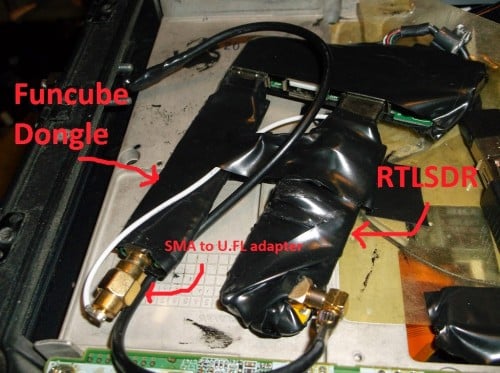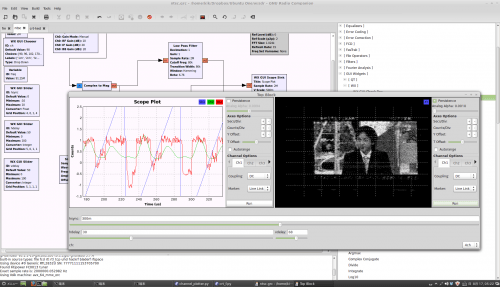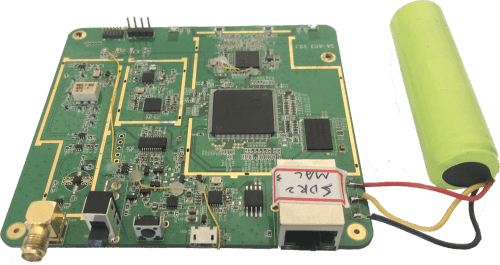Modifying a Laptop by Embedding an RTL-SDR and FunCube Dongle
Blogger “French Fry Cattaneo” wanted a portable laptop with built in SDR capability. To achieve this he opened up his Panasonic ToughBook CF-30 laptop and embedded an RTL-SDR FubCube dongle into the laptop using the space left by unused expansion ports.
Cattaneo connected the two SDRs to a small hub and soldered the usb hub connections directly onto a laptop USB port. He also installed an external SMA connector for the RTL-SDR and connected the FunCube’s antenna port to a cellular antenna that was built into the laptop.
He notes that there could be RF interference issues from the laptop, but has so far had no trouble receiving the strong signals he is interested in.




